Affiliate disclosure: This post may contain affiliate links. Please see our Privacy Policy.
Silkie Chickens are fun, fluffy additions to any backyard flock. They’re by far the fluffiest chicken breed, making them a favorite pet chicken and an excellent choice for children. They’re known for their friendly personalities and strong mothering instinct.
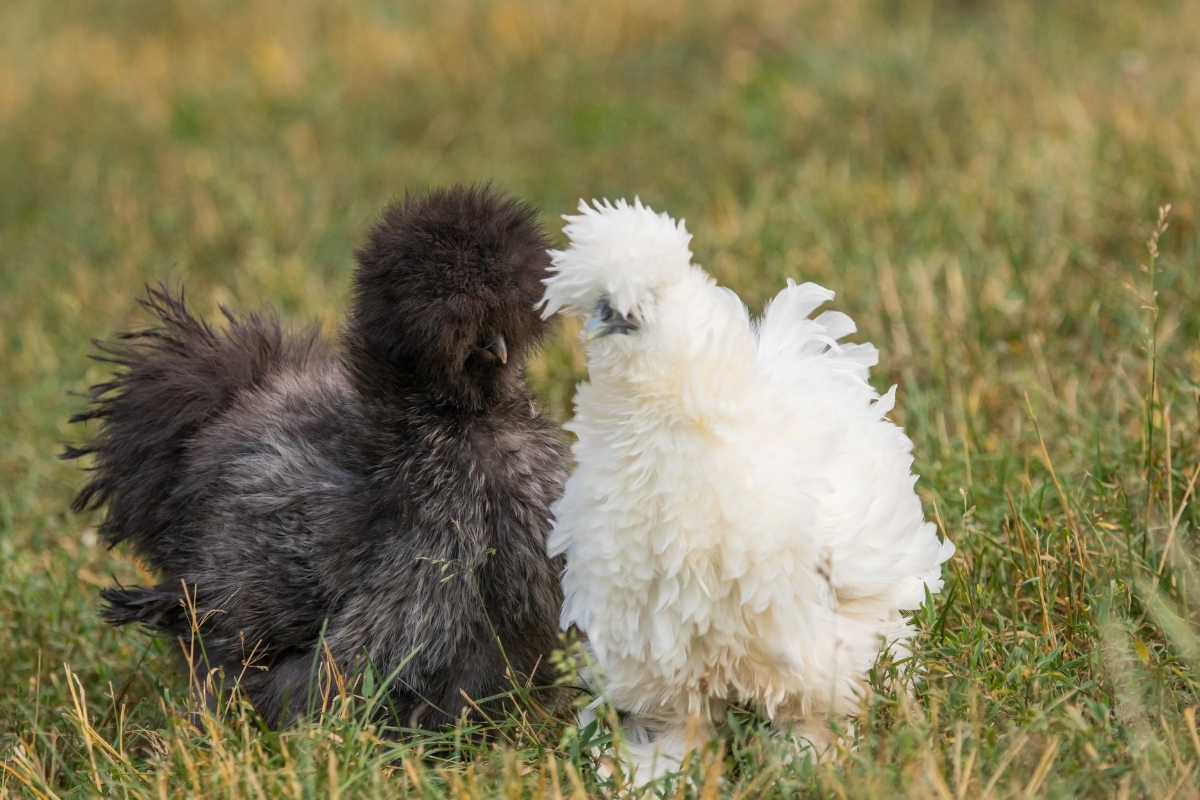
My daughter is our main chicken tender here on the homestead, and as such, she’s in charge of choosing chicken breeds. At first, she was most excited about chickens that lay colorful eggs, and our egg baskets had all the colors of the rainbow. At the beginning, it was all about the eggs.
Once our egg basket was plentifully full, breed choices became more about fluffiness and friendliness.
At some point, we added Bielefelder roosters to our flock, and those snuggly guys are even friendlier than our hens, and she realized just how friendly chickens can be. They’re beautiful, and personable, but they’re not all that fluffy.
Silkies, on the other hand, are the fluffy poodle of chicken breeds. Incredibly friendly, and with unsurpassed fluffiness, they make the perfect lap thicken.
While smilies don’t lay all that many eggs, they’re the perfect addition to your coop if you’re looking for a friend who will happily greet you each day (while you’re collecting eggs from your other ladies).
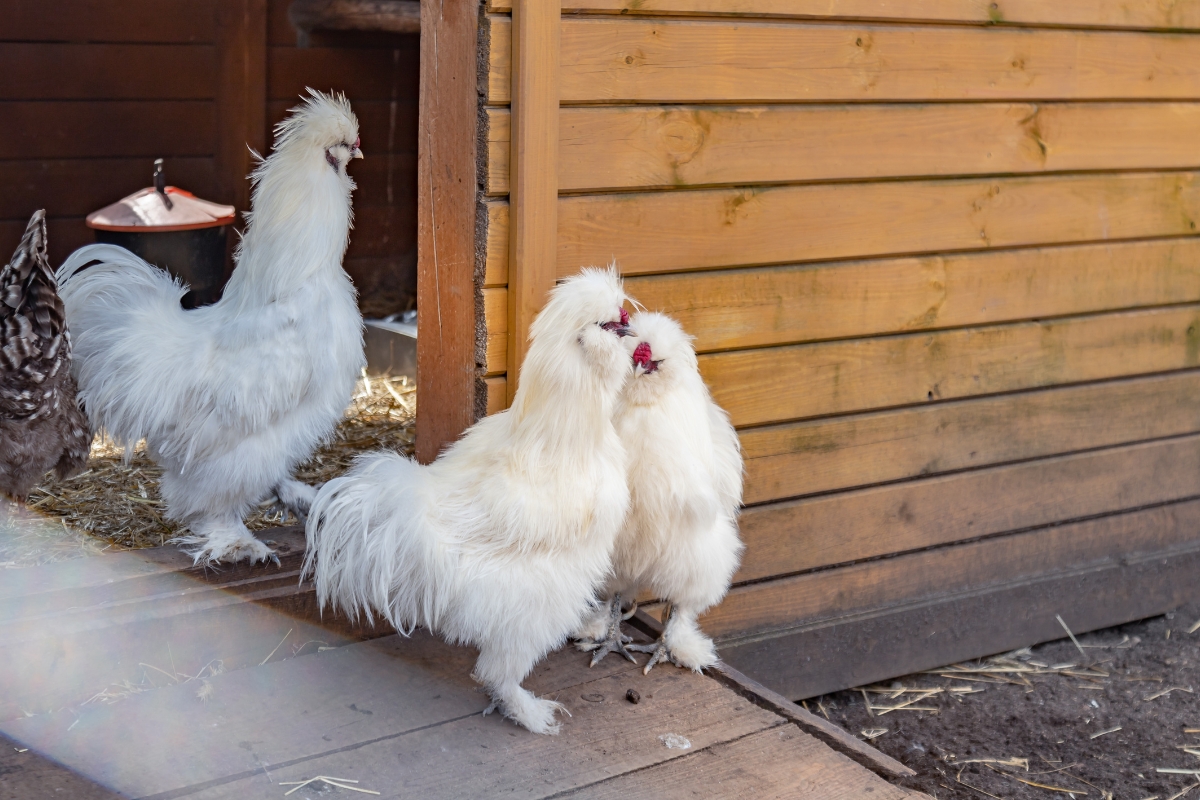
What are Silkie Chickens?
Silkies, also known as Chinese silk chickens, are very appropriately named for their fluffy plumage. These feathered pom-poms look more like clouds than birds! Silkies are prized in the show ring for their unique appearance and are treasured as sweet, affectionate pets.
While fluff is one of the biggest selling points of a silkie, there are other parts of their appearance that make them unique. They have extra toes and blue-black skin!
Silkies are primarily used for exhibitions and as companion animals. It’s easy to see why you might consider a silkie to add to your flock.
Pros and Cons of Silkie Chickens
If you’re looking for quick answers, here are the high points:
Pros
- Affectionate and make great companions
- Unique appearance (satin-like feathers, five toes, black skin)
- Great mothers
- Happy to live in small spaces
- Can’t fly very far
Cons
- Don’t lay many eggs
- Can be high maintenance (keeping feathers dry and clean is important)
- Produce little meat
- May be picked on by other breeds
- Highly susceptible to Marek’s Disease
- Vulnerable to predators
- Prone to parasites
Silkie Chicken Characteristics
Silkie chickens have a place in the history books, and they’ve been around a very long time. Most historians believe that they originated in China, although accounts of similar chickens exist in both India and Indonesia. Marco Polo even wrote about silkies during his travels to Asia in the late 1200s, describing them as “fowl which have no feathers, but only hair, like a cat’s fur”.
Silkie chickens made their way to Europe by the mid-1800s. They certainly were novelties– some early Dutch chicken farmers claimed that they were mixed with rabbits! The silkie was recognized as an official breed in North America in 1874.
- Breed Name: Silkie (or Chinese silk chicken)
- Breed Type: Exhibition, ornamental, and companion birds.
- Temperament: Affectionate, loving, docile.
- Size: Small. Large males are around 4 lbs (1.8 kg). Large females are around 3 lb (1.3 kg). Bantam males are 1.38 lbs (0.6 kg). Bantam females are 1.13 lb (0.5 kg)
- Eggs Per Year: 100
- Eggs per Week: 2-3
- Egg Size: Small to medium
- Egg Color: Cream or white
- Lifespan: 7-9 years
- Time To Maturity: 8-12 months
Silkie Breed Standard
Show breeders take great pride in their silkies, and for good reason–these birds are stunning! There are two main varieties of silkie: bearded and non-bearded, and these can be bantam-sized or large. In the US and Canada, silkies are only considered to be bantam. Silkies come in a rainbow of colors, including black, blue, gold, partridge, and white.
The heads of show silkies are short and topped with a pompom.
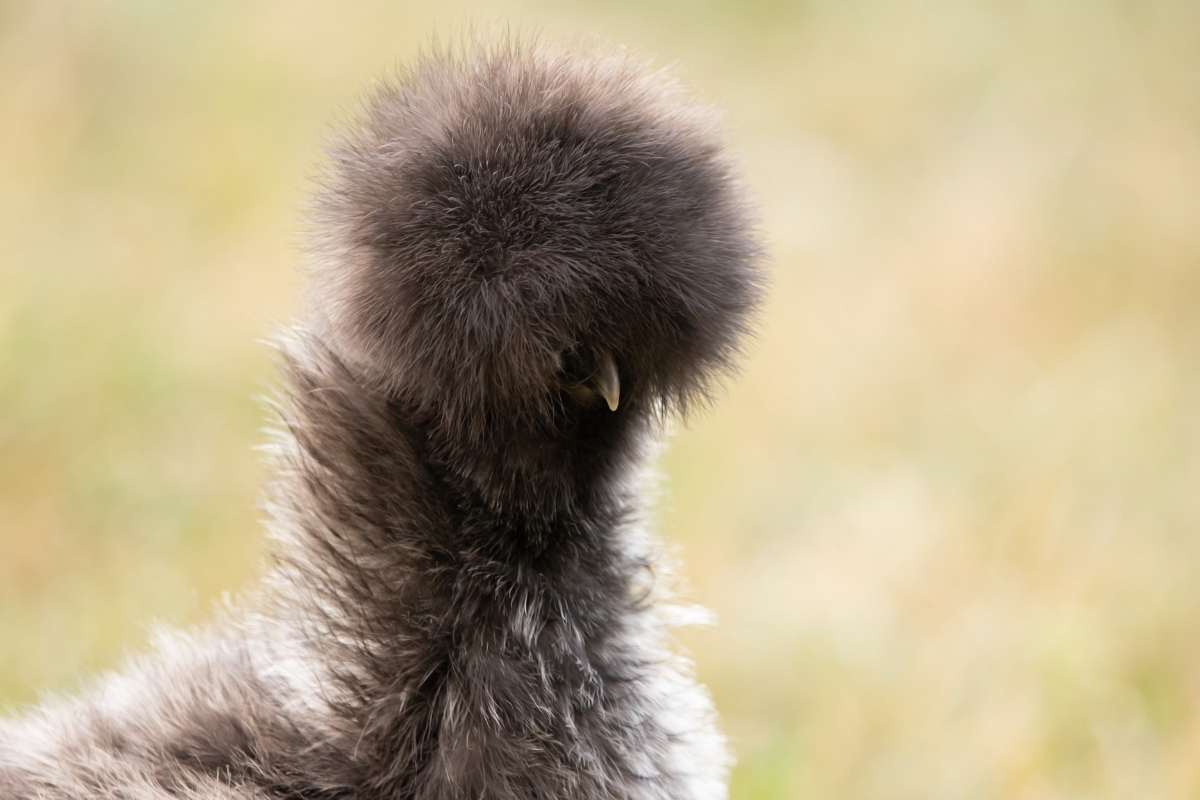
The eyes of silkies are covered by their head feathers, and when revealed, are completely black. Their beaks are short and dark gray.
Their combs are black, circular in shape, evenly set on their heads, and furrowed, like a walnut. The rooster has a more prominent comb than the female.
Their earlobes are a striking turquoise blue.
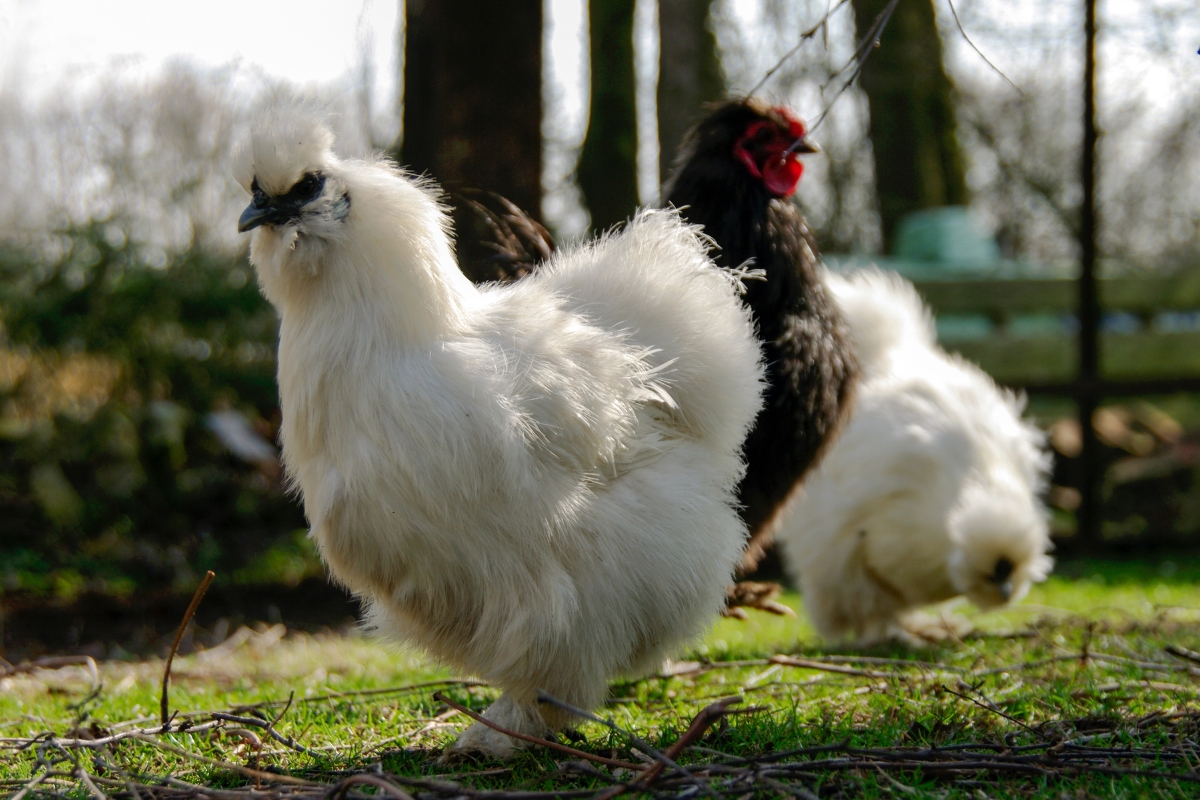
Silkies are either bearded or non-bearded. Bearded silkies have a muff of feathers extending from their earlobes and heavily covering the bird’s neck, leaving only their beak poking out.
Non-bearded silkies have faces that are much more visible, as the earlobes and wattle are not covered.
Their bodies are short with broad shoulders. Their legs are short, stout, and black. Besides their black skin and distinctive plumage, silkies are unique in that they have five toes (a trait called polydactyly, in which an animal has an extra finger).
Silkie feathers are special.
Most chickens have barbs on their feathers, which branch off of the main shaft. Feather barbs branch off into barbicels, which work like velcro to keep feathers locked together and in alignment.
Silkies lack these barbicels, and their feathers fly freely without sticking to each other.
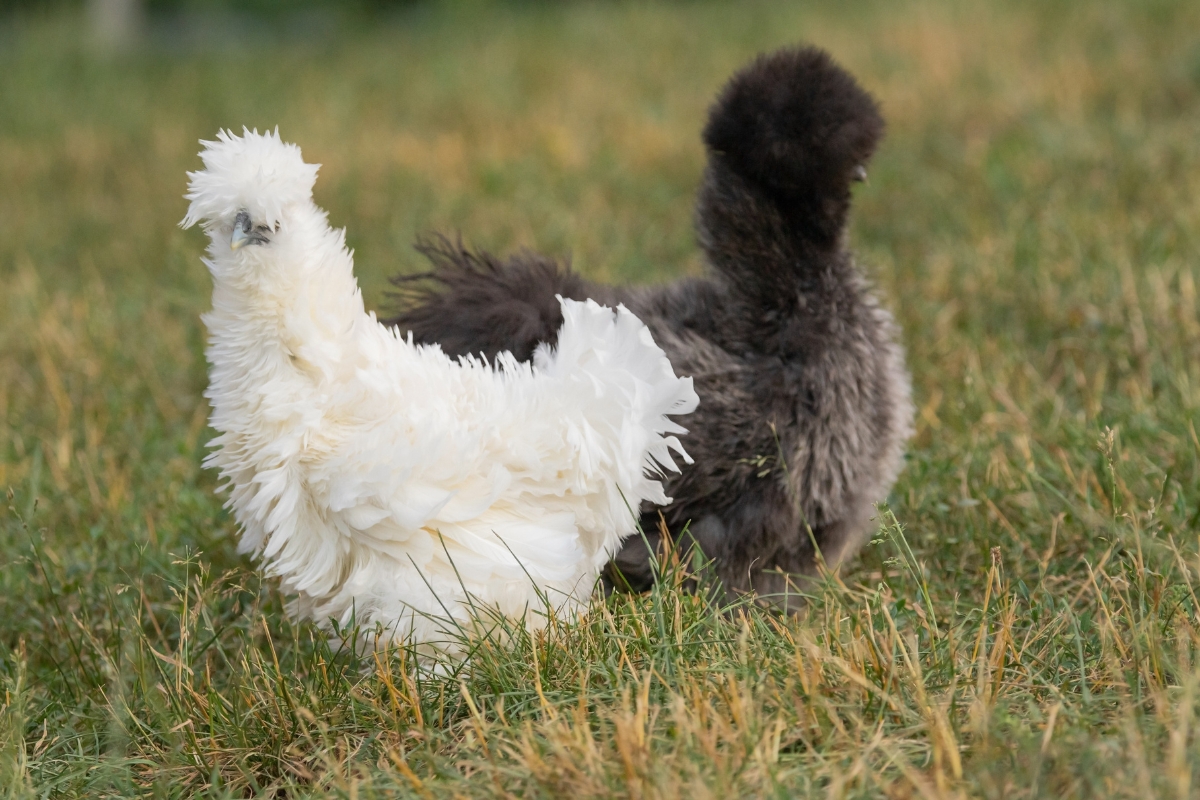
The colors accepted by the American Poultry Association are black, blue, buff, gray, partridge, splash, and white. Other colors, such as cuckoo, lavender, and red, are not included in the breed standard.
There is also a specific type of silkie known as a “satin silkie” which has smooth feathers in some places and pom pom like puffed feathers in other locations.
Satin silkies are like silkies in every other way except feather type, and their behavior, meat, and coloration will be that of a silkie. The main difference is that fluffy silkies have two recessive genes for fluffy feather type, while satin silkies have one or none of those genes…leading to some or all regular chicken feathers.
Depending on how it comes out, mixed feather satin silkie chickens can be quite striking.
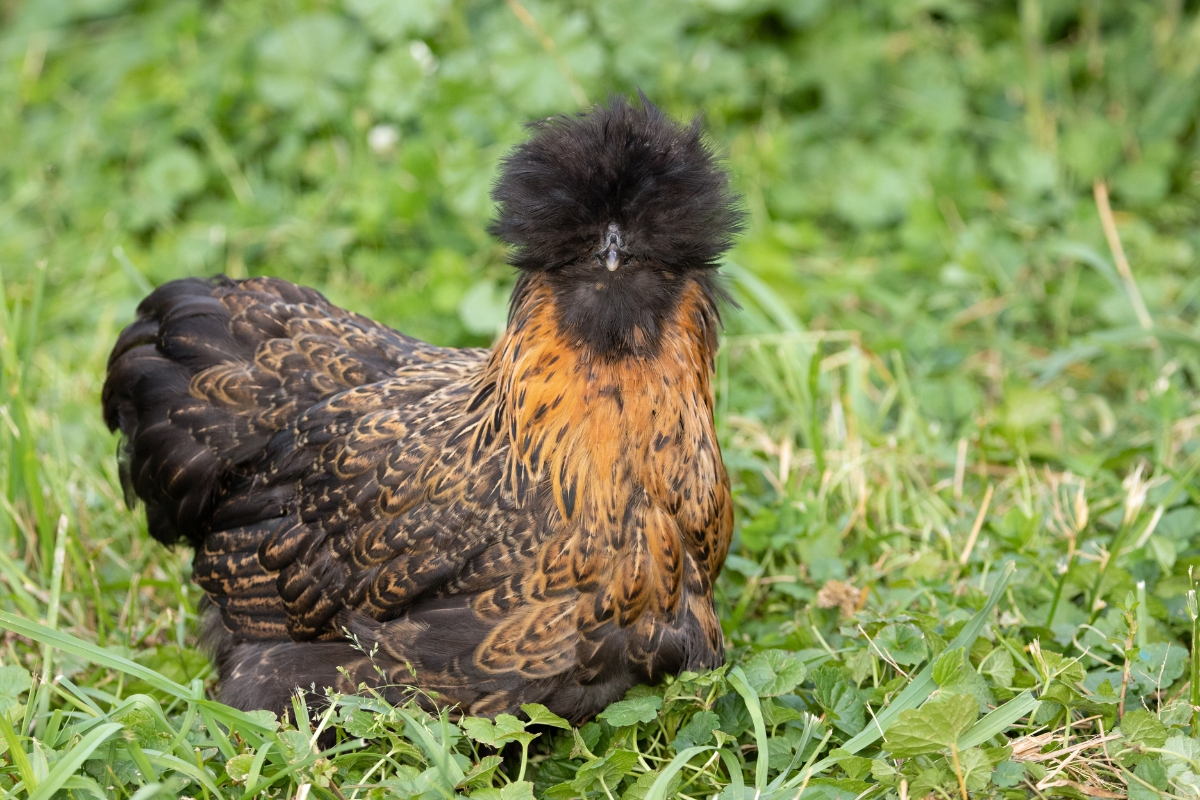
Temperament
If their fluffiness hasn’t won you over, a silkie’s personality definitely will! Full of charm and character, a silkie makes a wonderful companion. Lap dogs and cats have strong competition because silkies are known to be “lap chickens.” They love to snuggle up to their owners and love to chat, but do so in a hushed way.
Because of their friendliness, silkies are prone to being picked on by aggressive breeds and often find themselves at the lower end of the pecking order.

Hardiness
There are mixed reports of the hardiness of silkies. Some people say that their chickens take the cold very well, while others say that their chickens shiver through the winter. The feathers of silkie chickens don’t insulate as well as the feathers of other breeds and make them more susceptible to frostbite. Keeping silkies dry is very important.
Like most chickens, silkies are more tolerant of the cold than they are of the heat. No animal should be subject to overly harsh conditions, so make sure that you have proper shelter, warmth, water, and shade for your silkies in all seasons.
Silkies are happy to live in a coop or free-range, but there are a number of things to consider about the way you house them.
Because of their unique feathers, silkies have a hard time flying and even seeing, making them vulnerable to predators. Make sure that their enclosure is safe from intruders, because silkies are defenseless.
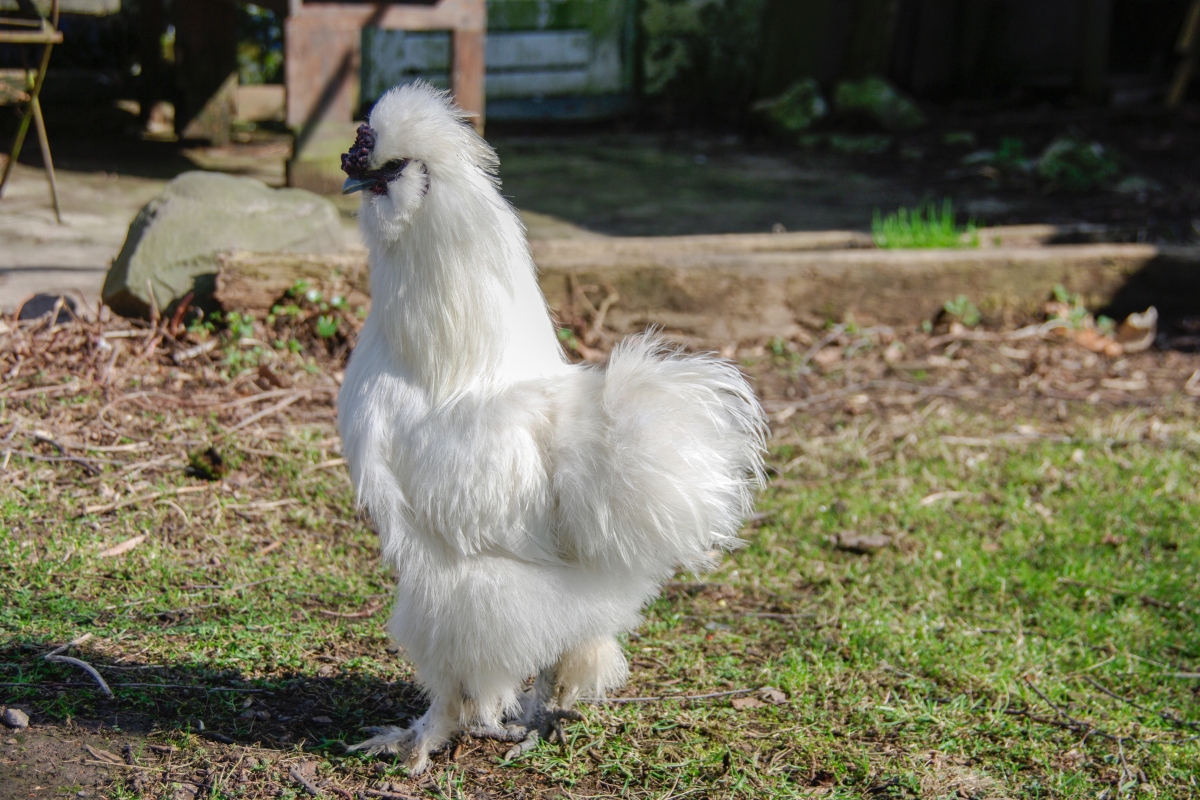
Egg Production
People don’t buy silkies for eggs. Simply put, they aren’t good layers. They might lay up to 3 eggs per week or 100-120 eggs per year. They start laying at 7-9 months, but some might take up to a year.
Egg Color
Silkies lay white, off-white, and light brown eggs.
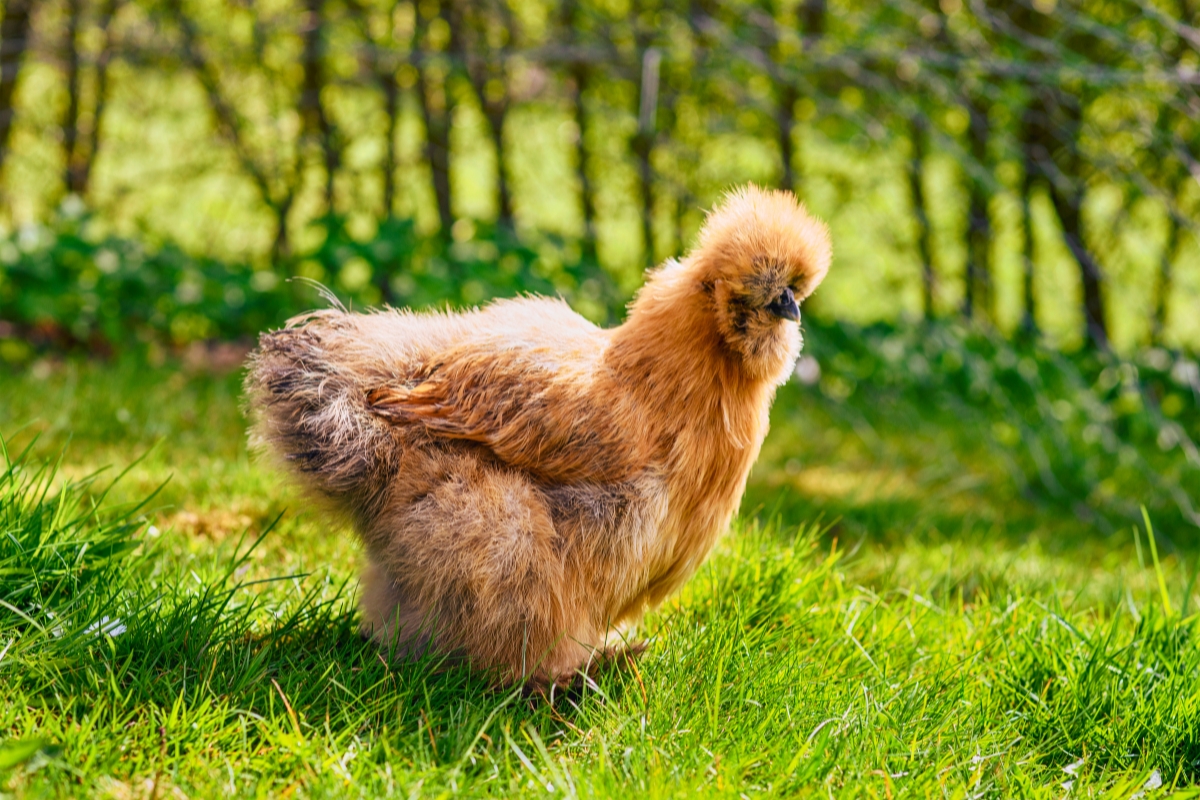
Meat
While you can certainly eat a silkie, they won’t provide you with much meat. You’ll find that they’re much smaller than how their fluff makes them look. Silkie meat is lean and gamey in taste.
You might be surprised if you eat a silkie and discover that their bones are black. They’re classified into a group of Chinese fowls called “black-boned chickens” because of a rare trait called fibromelanosis, which makes the skin, bones, and connective tissues of these chickens dark. This makes silkie meat a delicacy in some places.
Silkie meat is popular in many Asian countries, especially China. In traditional Chinese medicine, silkie soup is prescribed to women who have just given birth for energy or to alleviate headaches.
Broodiness
Notoriously good mothers, silkie hens are very broody. A hen will happily mother the eggs of other chickens and hatch them, willingly or not– some silkies take eggs from other nests. Some silkie moms will even raise ducks! If you want a living incubator, silkie hens are a great choice.
It is worth mentioning that the feathers of silkie chickens might suffocate chicks, so it’s advised to have a silkie cross rather than a purebred silkie if you’re considering owning a broody hen.
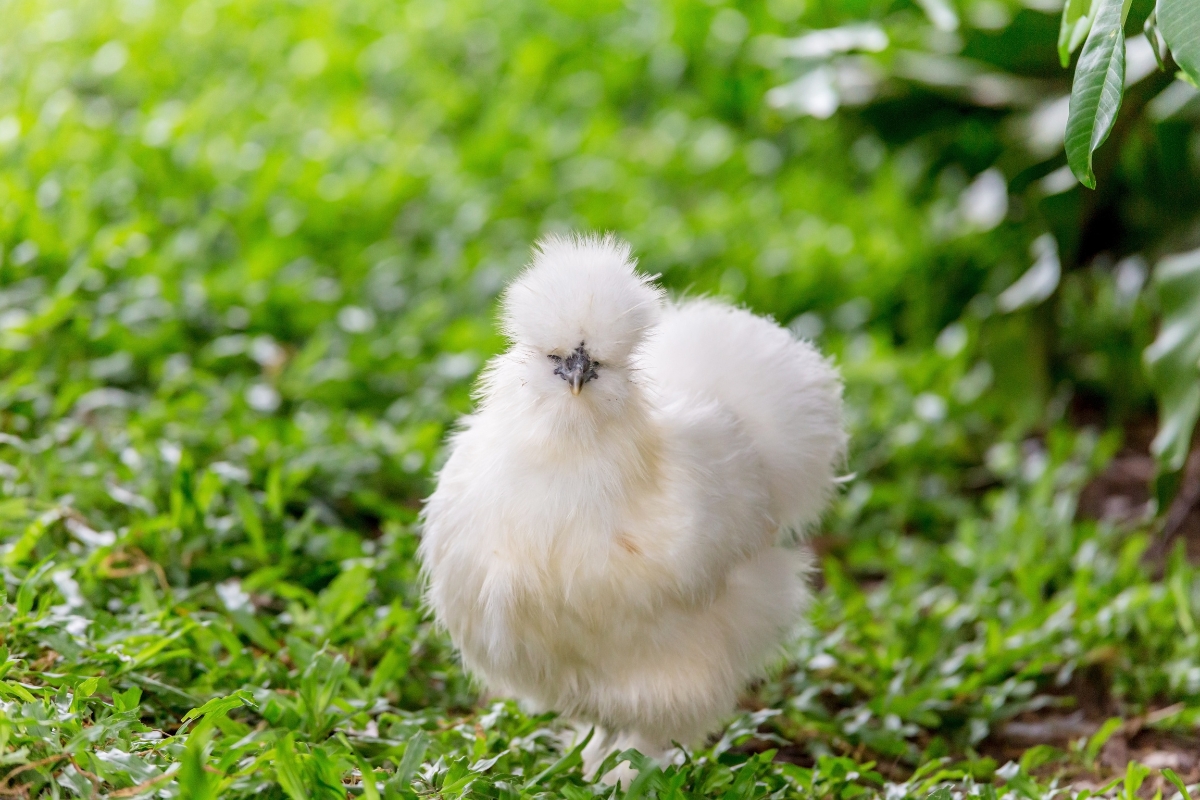
Foraging Ability
Silkies don’t forage very well, probably because of their limited sight. While they do enjoy fresh air, silkies aren’t good at catching bugs or digging up worms.
Cross Breeds
Because the emphasis of raising silkie chickens tends to be on their show potential, there aren’t many crossbreeds available. Their feather type is recessive, so when they are crossed with hard-feathered breeds, their offspring have hard feathers or a mix of feathers, like satin silkies.
That being said, some people have cross-bred silkies to produce chickens with other desired characteristics, like broodiness. Orpington-silkie crosses are examples of the very best broody birds.
Common Health Issues
Silkies are prone to hypothermia and frostbite. Their feathers lack the insulation that exists in other breeds, and wet silkies are very vulnerable. Make sure to dry off your silkie if they get wet, gently blow- or towel-drying.
Silkies are also prone to parasites. Their feathered legs are easy targets for scaly leg mites. Lice, mites, and other external parasites are difficult to see on silkies, so make sure to monitor their feathers regularly. Providing dust baths will help prevent lice.
A silkie’s rump feathers will need trimming or cleaning to prevent poop accumulation. Poop clinging to a silkie’s bottom increases the possibility of flystrike, a disease in which flies lay eggs on chicken droppings.
Silkies are highly susceptible to Marek’s Disease, also known as “fowl paralysis”. It is a contagious form of Herpesvirus that causes inflammation in the nervous system, tumor growth, and paralysis. Luckily, MD is preventable, as long as chickens are vaccinated against the disease. It’s recommended that all chickens are vaccinated as babies to prevent it from spreading.
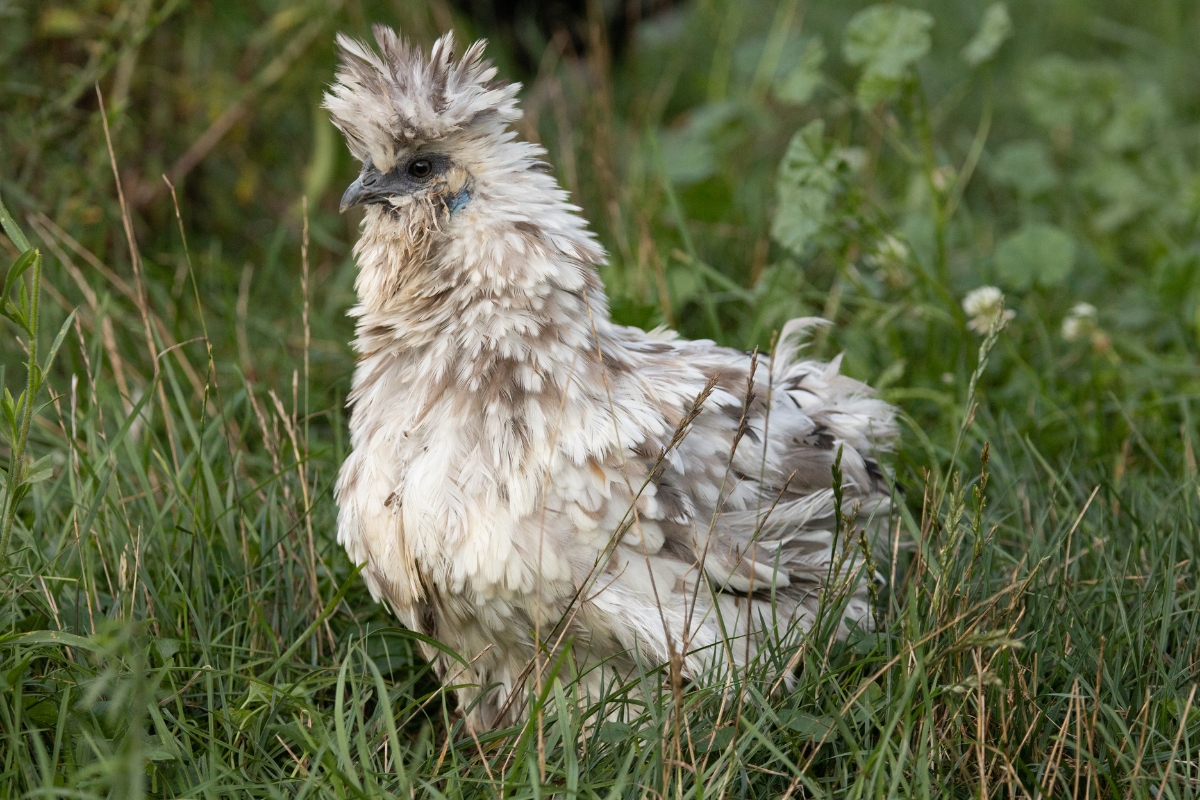
Silkie Chicken FAQs
Silkies have won over the hearts of many, and I hope this article showed you all of the amazing things these beautiful birds have to offer. Here are some more questions that might help you decide whether silkies are right for you.
Are silkie chickens friendly?
Silkies are known to be one of the friendliest chicken breeds available. They are gentle, sweet, and love their owners, often snuggling up to their people and sitting in their laps. They enjoy being petted and make great company.
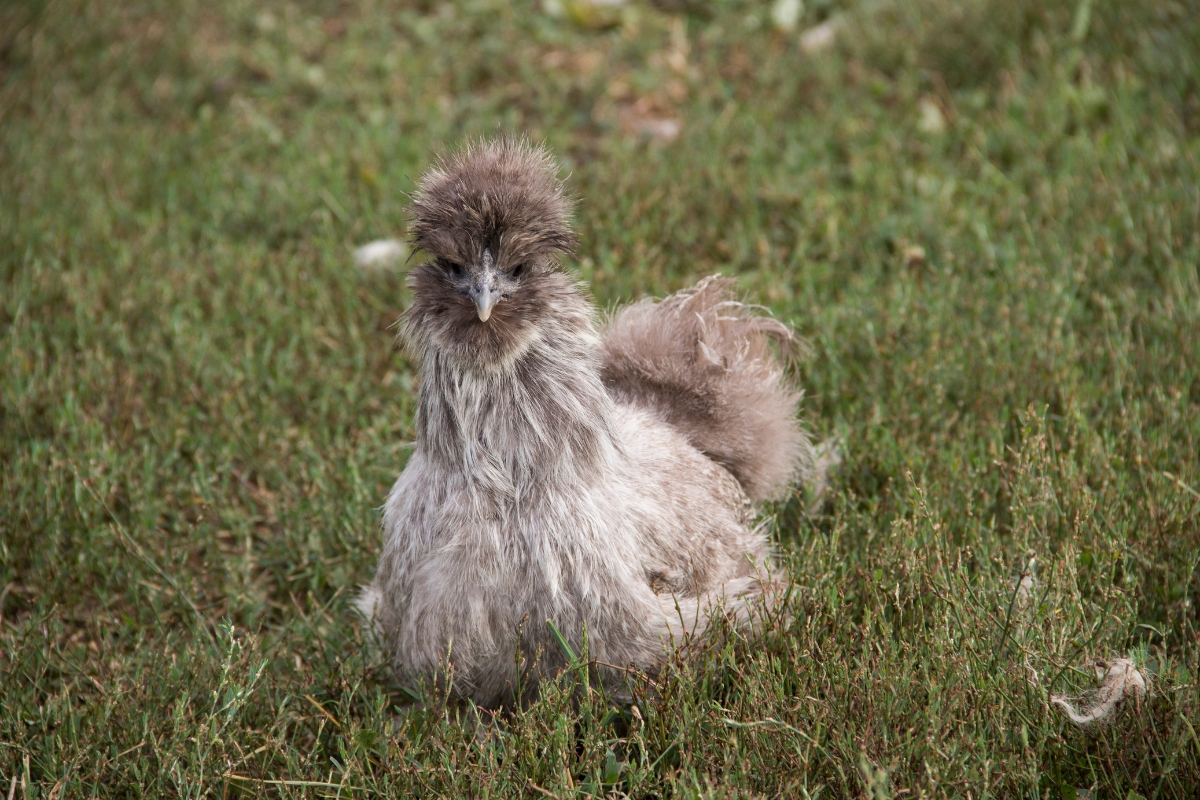
Are silkie chickens good egg layers?
Silkie chickens are very poor layers and lay up to three eggs per week.
What color egg does a silkie lay?
Silkie eggs range from cream to white.
Are silkie hens broody?
Silkies are notoriously broody. Silkie crosses have been used to incubate eggs.
How big are silkie chickens?
Silkies are small chickens, ranging from 8-14 inches tall. Roosters weigh up to four pounds, and hens weigh up to three pounds.
Are silkie chickens good for meat?
Silkie chickens do not yield much meat. The meat that they have is lean. They are seen as a delicacy because their meat is black in color and have been used for centuries as medicinal food, but they don’t make good regular table fare.
Are silkie chickens autosexing?
It is very difficult to tell the difference between silkie males and females until they reach a certain age, so silkies are not autosexing.
Are silkie chickens cold-hardy?
Silkies tolerate the cold to some degree, but do not do particularly well as their feathers lack the insulation present in hard-feathered breeds. They do not tolerate damp conditions and can easily develop frostbite.
How long do silkie chickens live?
The average lifespan is seven years, although they may live longer in the right conditions.
Are silkie chickens easy to raise?
They are easy to raise in that they get along with their owners and other chickens very well, but these birds can be high maintenance. Their unique plumage makes them susceptible to parasites and need regular monitoring to make sure that they are healthy.
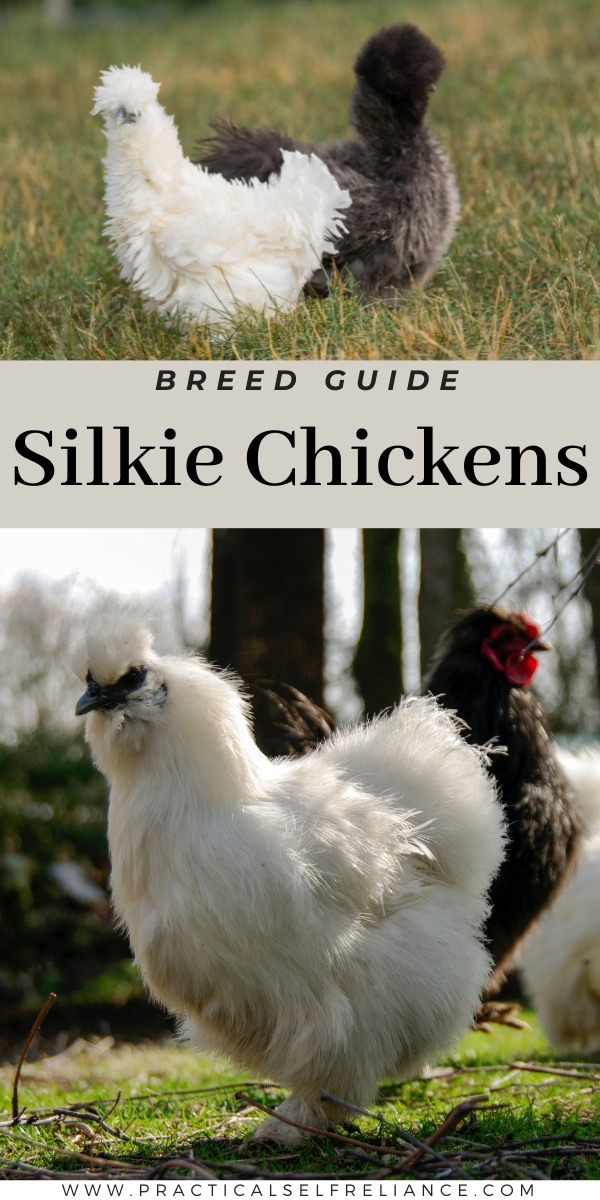

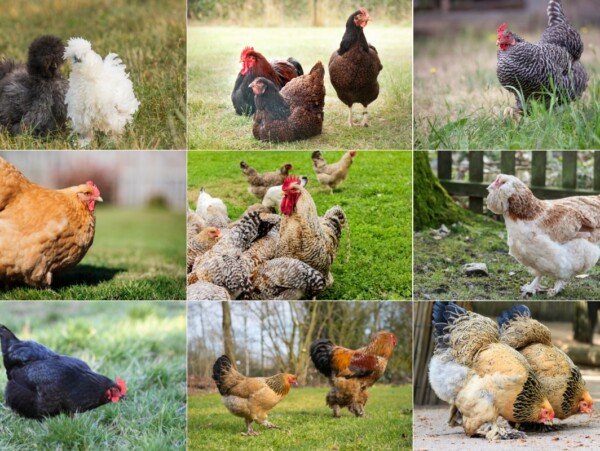
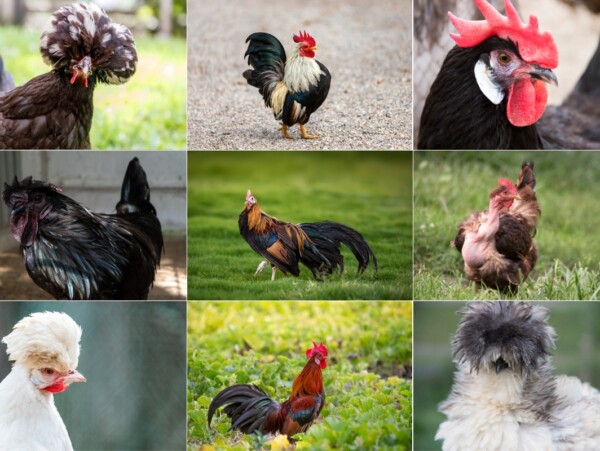
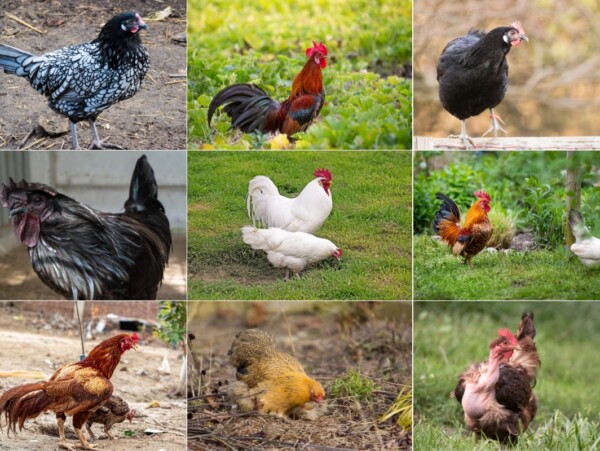










Nice article. Thank you.